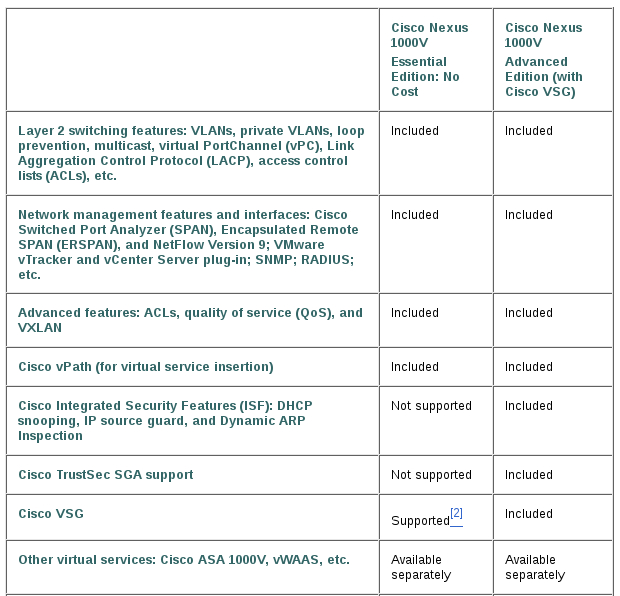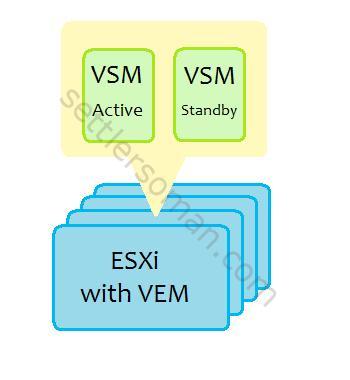Cisco Nexus 1000v is very popular and still supported in VMware environments (vSphere 6.0 also as you can read here). I have written some posts about this solution and in this post we discuss the architecture of Cisco Nexus 1000v.
Cisco Nexus 1000 represents a distributed switch solution. The distributed switch provides a centralized interface from which you can configure, monitor and administer virtual machine access switching for the entire data center. Currently there are three distributed switches available for vSphere infrastructure:
- vSphere Distributed Switch (vDS)
- VMware NSX
- Cisco Nexus 1000v
All above solutions requires ESXi host with Enterprise + license. I'm not going to discuss NSX and vDS - there will be topic of my next posts.
Cisco Nexus 1000v Architecture
The Cisco Nexus 1000V Series implementation has two main components:
- Virtual Supervisor Module (VSM)
- Virtual Ethernet module (VEM)
The VSM provides the management plane functions for the Cisco Nexus 1000V Series and can be deployed highly available (Active-Standby). The VSM is a virtual machine (as shown on above figure) that requires three vNICs - each has a specific function, and all are fundamental to the operation of the Cisco Nexus 1000V Series. There are following vNICs types:
- Control VLAN (control0) – is used to communication with VEMs and VSM partner (standby VSM). This is the first interface on the VSM (labeled “Network Adapter 1” in the virtual machine network properties).
- Management VLAN (mgmt0) – is used by VSM Management interface (Mgmt0) to communicate with a vCenter to publish port configuration, remote access etc. This is the second interface on the VSM (labeled “Network Adapter 2” in the virtual machine network properties).
- Packet VLAN – is used by VEM to forward any control packet (eg. CDP) received from upstream network to VSM for further processing. This is the third interface on the VSM (labeled “Network Adapter 3” in the virtual machine network properties).
The VEM-to-VSM Network Communication can be based on Layer 2 mode for control and packet and there are must be in the same Layer 2 domain (same VLAN) or Layer 3 mode.
Cisco Nexus 1000v versions and main features
The Cisco Nexus 1000V is being offered in two editions: Essential (free license + paid support) and Advanced (paid).

Cisco Nexus 1000v for VMware - Architecture overview and features - versions - cisco.com
You can download (account required) the Cisco Nexus 1000v here.
Why to use Cisco Nexus 1000v?
Some years ago, Cisco Nexus 1000v supported more features than vSphere Distributed Switch such as:
- LACP load balancing algorithms
- Netflow, Private LAN etc.
Currently, vDVS supports practically the same features like Cisco Nexus 1000v. Still there are some cases when Cisco Nexus 1000v could be a good decision:
- separation of duties - virtual network should be managed by Cisco Admins and Nexus 1000v ideally integrates with another Cisco (physical as well) switches.
- a good load balancing solution if upstream switch does not support LACP... Sometimes it happens. Cisco Nexus 1000v supports vPC Host Mode Pinning.
If you want to deploy Cisco Nexus 1000v and configure it, please follow the below posts:
